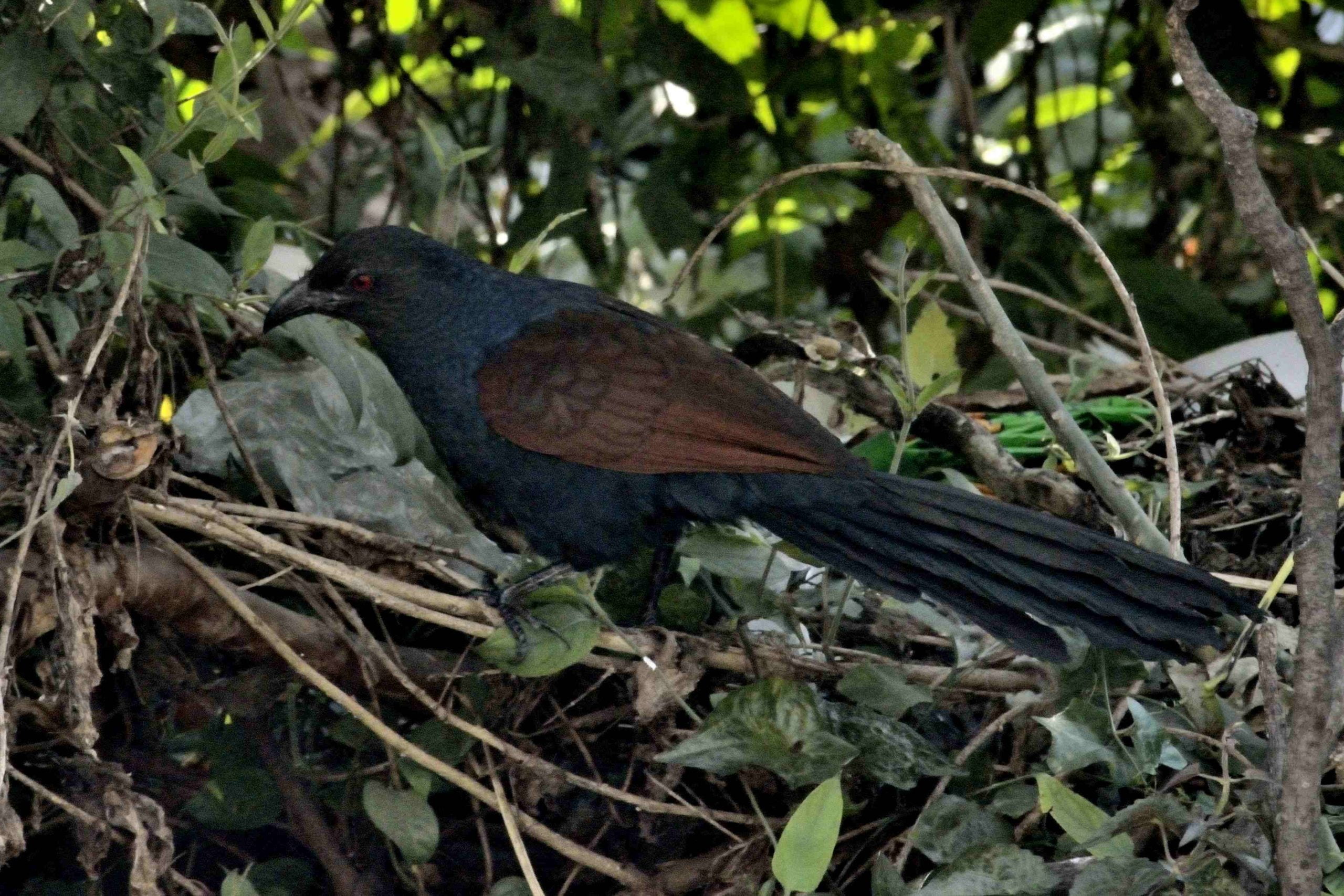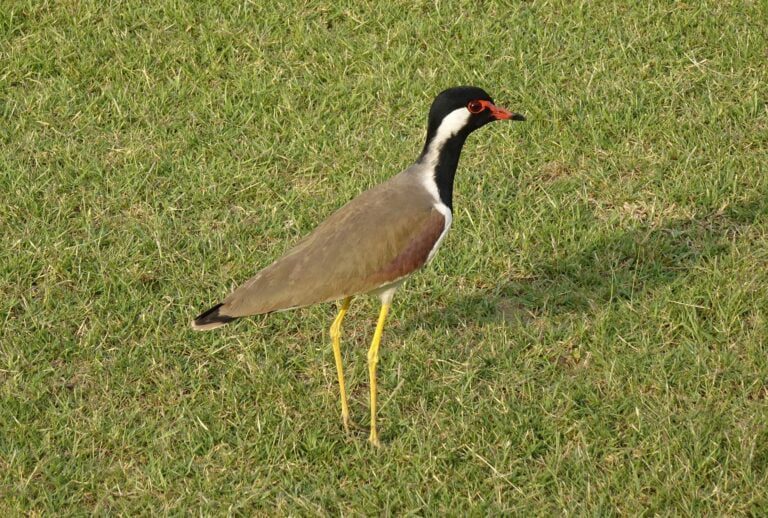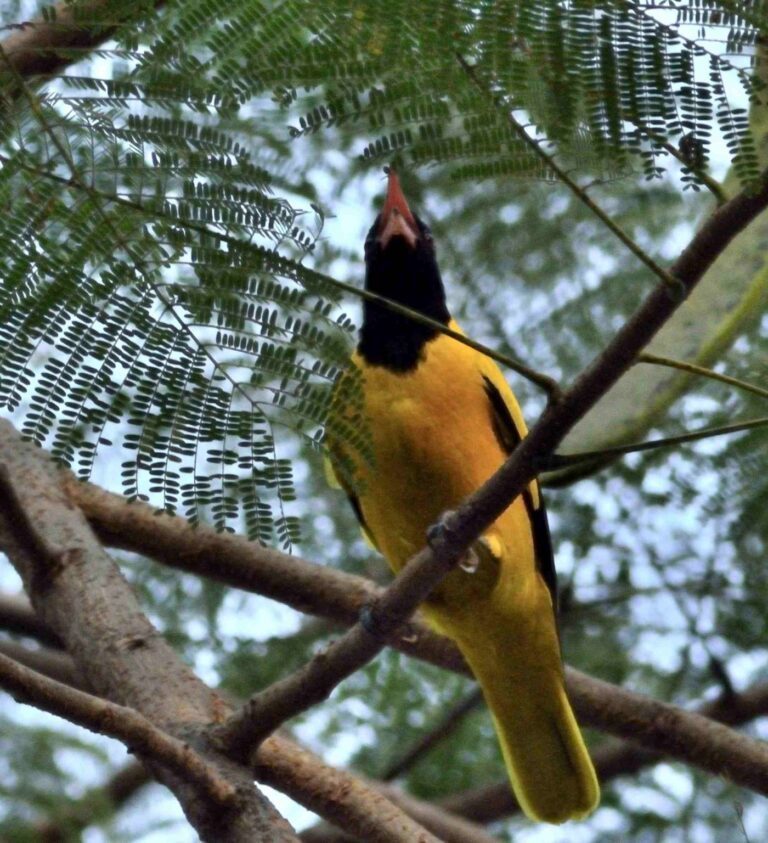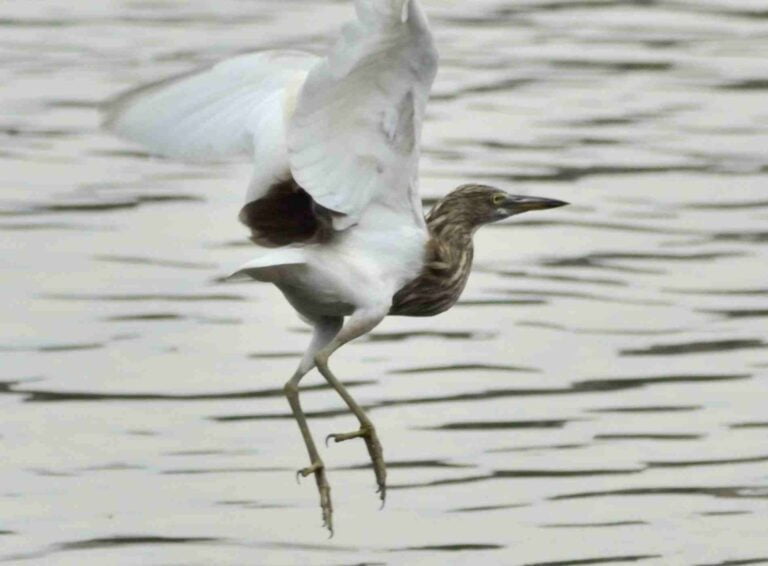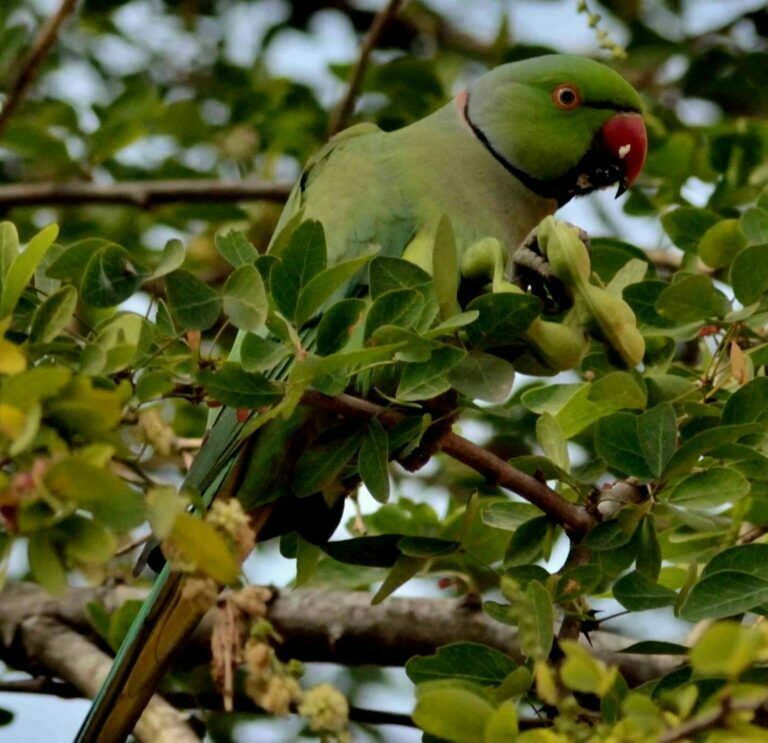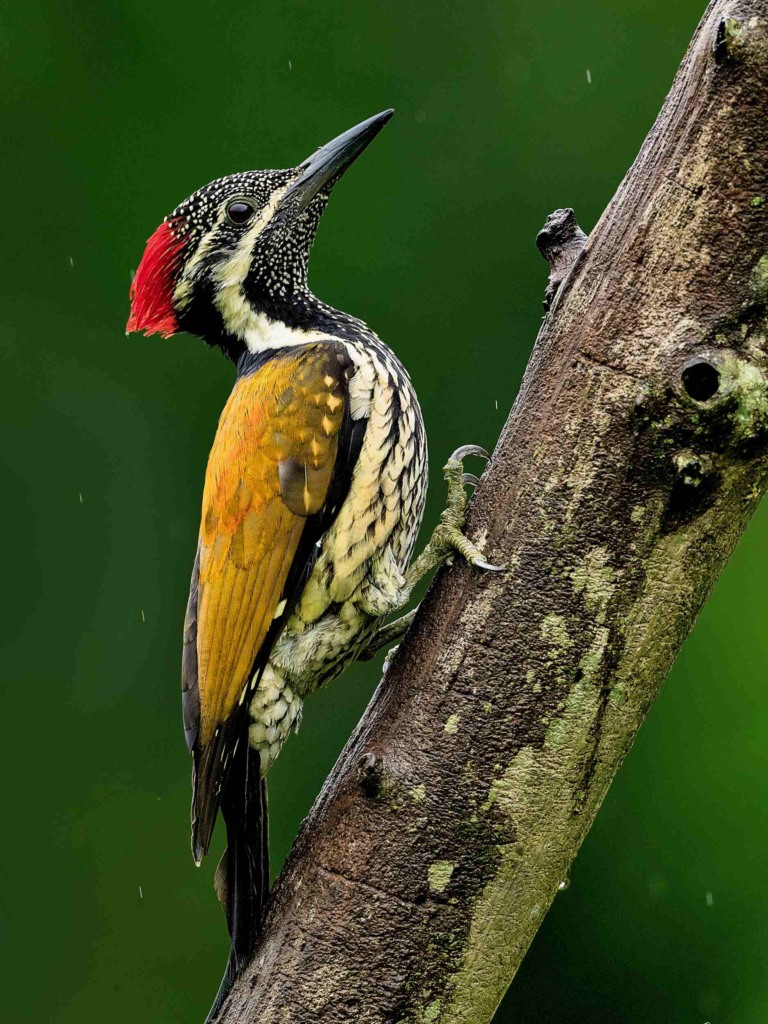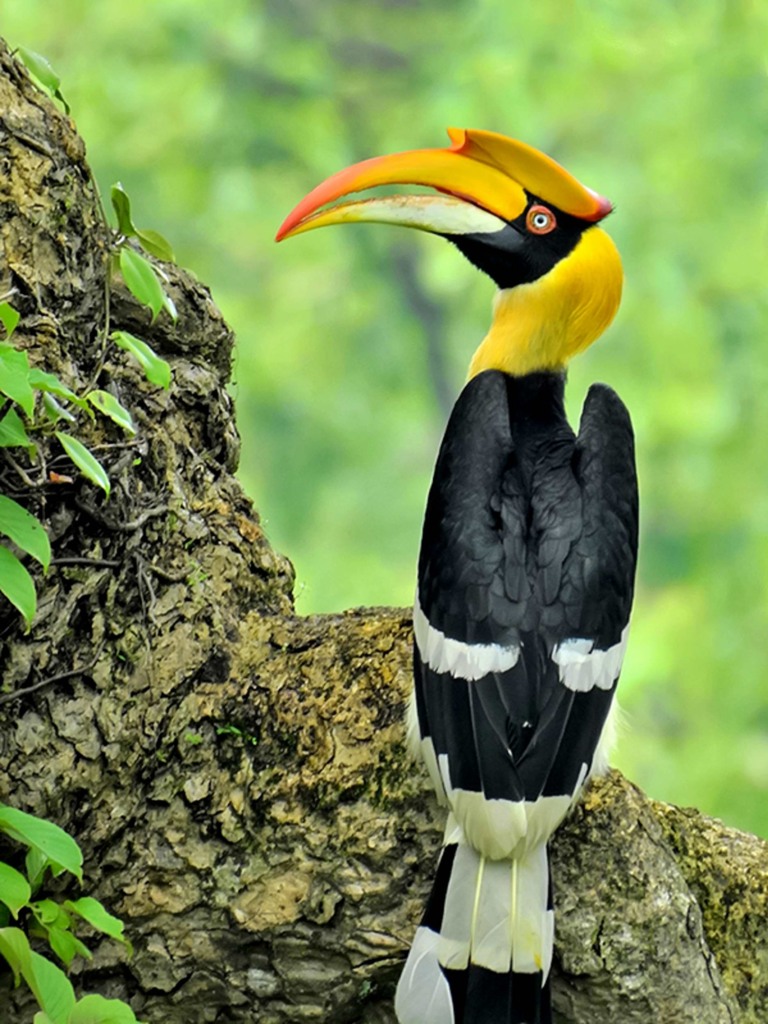The Asian Koel belongs to the order of cuckoo birds known as Cuculiformes. Its habitat includes the Indian Subcontinent, China, and Southeast Asia. Taxonomically, it shares a close relationship with black-billed koels and Pacific koels, often regarded as subspecies within the same superspecies.
Unlike many of its cuckoo relatives, the Asian koel is a brood parasite, depositing its eggs in the nests of crows and other host birds that care for its offspring. A distinctive feature is their preference for a mostly fruit-based diet during adulthood. The term “koel” is onomatopoeic, with variations in different languages. This bird holds significant symbolism in Indian and Nepali poetry.
Asian Koel Information
The Asian Koel, scientifically known as Eudynamys scolopaceus, is a distinctive and fascinating bird species known for its melodious calls and unique behaviors. Here is some information about the Asian Koel:
Description of the Asian Koel
1. Size: Asian Koels are medium-sized birds, typically measuring about 39 to 46 centimeters (15 to 18 inches) in length.
2. Plumage: The males and females of this species exhibit significant sexual dimorphism, meaning they have different plumage.
3. Males: Male Asian Koels have striking dark plumage with glossy, iridescent bluish-black feathers. They have bright red eyes and a long, graduated tail with white tips.
4. Female Koel: In contrast, females have brownish plumage with white streaks. They lack the glossy black coloration of the males and have a brown eye.
- 5. Eyes: They have distinctive eye coloration, with males having bright red eyes and females having brown eyes.
- 6. Beak: Asian Koels have sturdy, curved beaks well-suited for their diet.
Habitat and Geographic Range
7. Geographic Range: Asian Koels are found in a wide range of Asian countries, including India, China, Sri Lanka, Bangladesh, Pakistan, Southeast Asia, and parts of Australia.
8. Habitat: They inhabit various types of habitats, including forests, woodlands, gardens, urban areas, and agricultural fields. They are often associated with densely vegetated areas.
Behavioral Adaptations to Habitat
9. Diet: Asian Koels primarily feed on fruits, especially figs, and insects. Their diet varies based on the availability of seasonal fruits and insects. They are known to regurgitate seeds, contributing to forest regeneration.
10. Mating and Nesting: Asian Koels are brood parasites, which means they lay their eggs in the nests of other bird species. The host species often raise the koel chicks as their own. The females are skilled at mimicking the calls of the host species to deceive them into accepting the koel egg.
11. Vocalizations: Males are known for their loud and distinctive calls, often heard during the breeding season. Their “koo-ell” or “ku-wit” calls are familiar sounds in their habitat. These calls are used for territorial defense and attracting females.
12. Flight: They are strong and agile flyers, able to navigate through dense vegetation in search of food and mates.
13. Seasonal Movements: Asian Koels are partially migratory in some regions. They may move to different areas in response to changing food availability and weather conditions.
14. Role in Ecosystem: Asian Koels play a role in seed dispersal as they consume fruits and then excrete seeds in different locations, contributing to plant growth and diversity.
15. Social Behavior: They are often solitary, but during the breeding season, males become more vocal and territorial as they compete for mates.
16. Adaptability: Asian Koels have demonstrated adaptability to urban environments, where they can be seen perched on trees and buildings, making their distinctive calls.
Overall, the Asian Koel is a remarkable bird species known for its unique behaviors, striking plumage (in males), and captivating vocalizations. It plays a significant ecological role in its habitat and adds to the diversity of birdlife in the regions it inhabits.
